- Danielle Boulden
- Researcher
- Collaborative Research: Broadening Participation with the STEM Ecosystem: Developing a Scalable Model using an RPP approach
- friday.institute/5965
- North Carolina State University
- Callie Edwards
- https://www.fi.ncsu.edu/people/ccwomble/
- Research Associate
- Collaborative Research: Broadening Participation with the STEM Ecosystem: Developing a Scalable Model using an RPP approach
- friday.institute/5965
- North Carolina State University
- Christine Sachs
- Magnet Coordinator
- Collaborative Research: Broadening Participation with the STEM Ecosystem: Developing a Scalable Model using an RPP approach
- friday.institute/5965
Public Discussion
Continue the discussion of this presentation on the Multiplex. Go to Multiplex



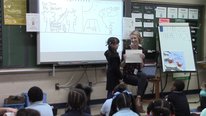
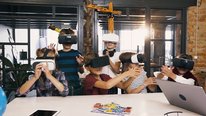
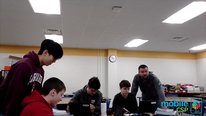
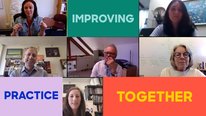
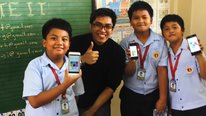
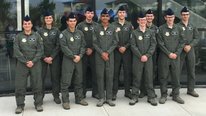
Danielle Boulden
Researcher
Hello everyone! My colleagues and I are excited for this opportunity to share with you the research-practice partnership work we have been engaged in over the past two years at Reedy Creek Magnet Middle School Center for the Digital Science to create a computational thinking (CT) and computer science (CS)-focused ecosystem. We have adopted the ecosystem framework as a strategy to broaden the participation of all students at the school in CT/CS practices. Together we have developed a cohort of teacher leaders at the school who support CT integration, engaged a variety of community stakeholders including families and business partners, and provided authentic CT/CS learning experiences for students through their core and elective classes.
While we have made great progress, we are still in the midst of our journey and welcome feedback, comments, and questions as we continue to build our ecosystem.
Deb Hall
Interesting work, Danielle!
I love your idea of conducting a "Family Coding Night"! Research has shown that engaging parental support (in particular, the dad, or some other male family figure or close friend of the family) seems to be key in attracting more females into STEM related careers. At Valencia College, we have conducted STEM related family events we referred to as a “Parent - Daughter TEA” hands-on STEM related activity workshop where TEA stood for Technology Engineering Aptitude, but we also served a proper “tea” with cucumber sandwiches, fruit, and ceramic tea cups and saucers that each girl got to take home with her at the end of the day. These family STEM outreach events were an absolute hit with the students and their families, but (WHEW!) they were quite a bit of a workout to set up and pull off well. Perhaps you have nailed down the perfect formula to conduct an effective family STEM outreach event…please share your strategies. My questions below are pretty detailed as we have run into a few issues of having to turn folks away on the day of the event. That was super challenging and disappointing for both the families and us. Unfortunately, we only had so many seats in the room where we were conducting the event and only so many activity materials (and teacups!) for each family member and their daughter to participate.
Which night and time have you found most successful to conduct you "Family Coding Nights"? Was there any interest from the families to conduct them on a Saturday morning or afternoon?
How long were your events?
Did you provide dinner or just snacks and beverages or perhaps not even bottled water because your families were programming and you wanted to keep your computer bench work area food and liquid free?
How many family members do you invite? Just one parent? Both parents? Did you invite siblings too up to a certain number or beginning at a certain age?
Do you charge one fee per family to participate or was it a free event or was it a per person fee?
Do you cap the size of the workshop to “first come, first serve” on the night of the event or do you ask families to register online with still a “first to register” until a certain number and then you turn families away online so that no family shows up on the night of the event only to get turned away because your lab classroom only has so many computers?
Did any families who signed up for your event online not show up?
Did you take families who came late to your event or did you advertise in advance that families needed to be on time to be able to participate?
Thanks in advance for sharing your “Family Coding Night” words of wisdom…
Christine Sachs
Magnet Coordinator
Hi Deb,
Thank you for your interest in our Family Code Night event and for sharing your Parent-Daughter TEA event. What a wonderful idea!
Since our Family Code Night was different from our annual STEM Night and was new to the school, we held it on the same evening as our after-school Open House, which allowed families who were already at school to stay and experience Family Code Night. However, leading up to the event we also advertised it within school and through parent newsletters and social media. These promotions directed people to an online sign-up form so we could have an idea of numbers in advance for facility and technology set-up.
This was a free, 90 minute event and there was no limit to the number of family members who could attend. We had families ranging from 1 parent and 1 child to families of 5. We did not have to turn anyone away, but attendance was high and we were able to fill our media center and 2 classrooms. We had set up laptops and presentation screens in each room prior to the event using the numbers from our registration form, but we had plenty of staff on hand to add more technology and address any spacing concerns for the families who attended but were not registered. Those on hand -- Reedy Creek teachers and Friday Institute experts and volunteers -- also were there to assist families with their coding projects. This enabled us to admit families who came in late, because we had enough staff helpers to take the latecomers, arrange technology for them, and bring them up to speed with the guided lessons we were conducting.
Because this was an evening event, we did provide the option for families to purchase food. Our school PTA offered pre-order pizza and bottled water, and during the event they opened the concession stand.
One thing that really made our Family Code Night a success was the differentiation we built in. While we used the excellent Code.org http://www.familycodenight.org/ model and script, we understood that it was geared toward elementary school families, and because we are a digital sciences magnet school whose students are becoming adept at code, we wanted to include additional levels of challenge. On our registration form we allowed families to select “beginner, intermediate, or advanced” coding activities. We then chose different rooms and presenters for the different activities. On the evening of the event, we opened with welcomes and introductions in the main room with all attendees, then we explained the leveled coding activities in the various rooms and the group split into their preferred locations to begin coding.
Thank you again for your questions. Our intent is to offer Family Code Night annually, and while we will continue to learn and adjust each year, we were very pleased with the event’s success and the positive feedback we received from families who were clearly enjoying coding together.
Janice Cuny
Global DIrestor of Align
Thanks for that detailed answer!
Dave Miller
Terrific project, Danielle, and thanks for sharing it in the showcase. I'm liking the CS-focused "ecosystem" approach and the focused work in CT that you're doing. We're part of the NSF Noyce MTF program at the University of Rochester, and one of our fellows from our Phase 2 award is doing her dissertation on CS in the kindergarten classroom, with a focus on coding, as coding connects to this broader ecosystem that you describe. Nice work, and once again, thank you for sharing it with all of us!
Christine Sachs
Danielle Boulden
Researcher
Thank you for the encouragement! Coding in kindergarten is a great way to broaden participation in CS. I applaud her efforts.
Sarah Young
Director of Strategic Initiatives
What a great "ecosystem" approach!
I am curious to know more about the curriculum that you utilized to integrate CT/CS into the subject areas? Do you have a different curriculum for each subject area? I can't wait to learn more, we are trying something similar in the state of Utah.
Christine Sachs
Magnet Coordinator
Hi Sarah,
This is Christine Sachs from Reedy Creek Middle. While we do offer 5 magnet electives with curriculum written specifically for our program, we also have worked with the Friday Institute to integrate CS/CT into all curricular areas. We build upon the standard curriculum by integrating CS and CT. Daily lessons in all subject areas overtly incorporate CT by using decomposition, pattern recognition, algorithm design, and abstraction. Teachers and students use this vocabulary as well. A great example of further building CS/CT into the set curriculum is when our 6th grade science teachers worked with the Friday Institute to expand their lessons about the Food Web to include students designing a simulation of the Food Web using Snap coding. In another example from 6th grade, after Language Arts students completed reading a Percy Jackson novel, they tracked Percy’s journey by programming plot points and major story events onto a map within the Snap coding platform. This “Hero’s Journey” computer game they helped to develop was then played by fellow students as a unit review.
We would love to hear more about what you are doing in Utah with these ideas!
Sarah Young
Jennifer Vermillion
Director of Innovative Teaching and Learning
Fantastic work, and thank you for showcasing your video! Your "ecosystem" approach - particularly your involvement of students' families - is really interesting. I would love to hear more about your family engagement strategies and what you found to be effective.
Christine Sachs
Magnet Coordinator
Hi Jennifer,
Thank you so much for your comment. Our family engagement strategies take a variety of forms -- everything from email and social media outreach to family-focused events such as the Family Code Night showcased in our video.
We reach out to parents weekly with grade-level newsletters describing our in-class activities, and our teachers and staff maintain active social media accounts to highlight our digital sciences program. We have a parent outreach document that explains the Reedy Creek/Friday Institute (FI) partnership which we share with current and prospective Reedy Creek families. Major sections of both the Reedy Creek and FI websites feature photos, details, and highlights of our Research Practice Partnership and how it is benefiting students.
Our PTA has hosted an annual community STEM Night, and this year we hosted our first joint Family Code Night with the FI. Our school's annual Curriculum Night is interactive with core and elective teachers offering collaborative activities that allow parents, together with their children, to experience the hands-on learning our students do each day. This is something that has proven to be effective and has generated overwhelmingly positive feedback from families.
An important member of our school’s Digital Sciences Team (DST) is our parent representative. Our DST is also comprised of teachers, school administration, and partners from the Friday Institute. Together we analyze and discuss all aspects our CS/CT Ecosystem model. Partners from the Friday Institute join us for family and magnet recruitment events to help explain and showcase our partnership, and to maintain their connection to our school community.
Jennifer Rosato
I love the idea of an ecosystem approach and a focus on integrating in multiple subject areas! I'm working with some schools on K12 pathways and am curious what you found to be some of the barriers or pain points in defining your system and then putting that system into place? In other words, what advice do you have for other schools? Also, did you use any particular tools or techniques to define your system?
Danielle Boulden
Researcher
Hi Jennifer! I would say one of the biggest hurdles initially was getting teachers to buy-in to coding across the content areas and then getting them to feel comfortable implementing it with their students. That's why we found it critical to develop a core of in-house expertise through our teacher leader program. This made it possible for other teachers in the school to see it implemented in classrooms with students to make disciplinary connections. It also provided them with the confidence that they would have a local support system.
Janice Cuny
Global DIrestor of Align
Nice project! Coding across content areas is does seem like the right way to go, at least in the early grades. How much professional development do you provide for teachers, especially those who are initially uncomfortable with the idea of implementing the program? How much time do the teacher leaders typically spend on assisting others? And how often can students expect to see coding get integrated within a subject area over the year?
Danielle Boulden
Researcher
Hi Janice! Thanks for the great questions! At first, we provided relatively extensive support for teachers that needed it. Our NC State team offered teachers a situated professional development strategy where we modeled a class that allowed the teachers to observe as they developed confidence with the materials and pedagogy. Then we gradually released that support throughout the day. This has become an effective strategy particularly for teachers who are using programs that they did not design themselves. For other teachers who have designed their own lessons, this type of intensive support has not been needed. By attending monthly PD sessions that have incrementally laid a foundation for understanding Snap! programming, curricular connections, and then allowing them to design their own lessons have been adequate support for many to be successful. It helps to know that they have a cadre of in-house expertise to go to for support with the teacher leaders. The time teacher leaders spend assisting their peers varies depending on individual needs, but it is typically accomplished within a few planning periods. The amount of coding students see integrated for each subject varies right now, but this school year most grades had exposure with one coding lesson per subject throughout the year. So at a minimum, three to four integrated lessons a year.
Robert Reardon
Love the "active ecosystem" concept. You have forged so many alliances that will endure and make a huge difference in the lives of so many students.
Christine Sachs
Janice Cuny
Global DIrestor of Align
How has the research component of the RPP helped in the development and evolution of your program?
Christine Sachs
Magnet Coordinator
Hi Janice,
The research component has played a major part in the development of our program. Collaboration as an RPP has allowed us to gain researchers’ perspectives and apply research techniques to our program’s implementation. For example, with guidance and input from the Friday Institute, teacher teams developed a logic model and investigated problems of practice. We also worked through an ecosystem drawing activity where participants drew the current and ideal CT/CS-focused ecosystems.
Our partnership with FI researchers allowed us access to North Carolina State University Computer Scientists who have provided direct instruction and hands-on support to teachers and students in professional development and in-class settings. More information about how research has contributed to the development of our STEM Ecosystem can be found at this link:
http://friday.institute/5965
Michael I. Swart
Janice Cuny
Global DIrestor of Align
Thanks.
It's interesting that you've involved CS faculty. Have you uncovered any promising ways to do that? Are the researchers prepared at all for the experience? Do they involved graduates or undergraduates interacting with the students? Who designs the activities?
Danielle Boulden
Researcher
Hi Janice! Our RPP team is truly diverse, which I think has helped lead to its success. On the university side, our team is a combination of CS faculty and staff who specialize in computer science education, STEM education faculty, educational researchers, and graduate students in both CS and STEM education. Many of us (including myself) were former teachers, so we have a deep understanding of the realities of public school teaching. Communication has been a strong lever for our partnership, where the teachers and staff at RCMMS are not afraid to tell us what they feel is working or not working in their classrooms. We use this feedback to adapt our approach as necessary.
When we first started working with teachers at RCMMS three years ago, our university team primarily designed the programming activities with teacher input and guidance. Now we are at a point where most teachers are designing their own lessons.
Michael I. Swart
Love this ecosystem approach. Too oft disciplines in formal schooling are presented in isolation with no supports to bring it to life or demonstrate its viability in the community. Are there plans for abstracting the necessary components into a plan that other schools/communities can implement?
Danielle Boulden
Researcher
Hi Michael! As a matter of fact, part of this grant is to scale the RPP work that we have done at Reedy Creek to a school in the Charlotte area that is just in the beginning stages of operationalizing their CS/CT-focused magnet theme. We work with faculty members from UNC-Charlotte who are leading the RPP efforts at that school, as they collaborate with its administration and teachers leaders to create a CS/CT-focused ecosystem there.